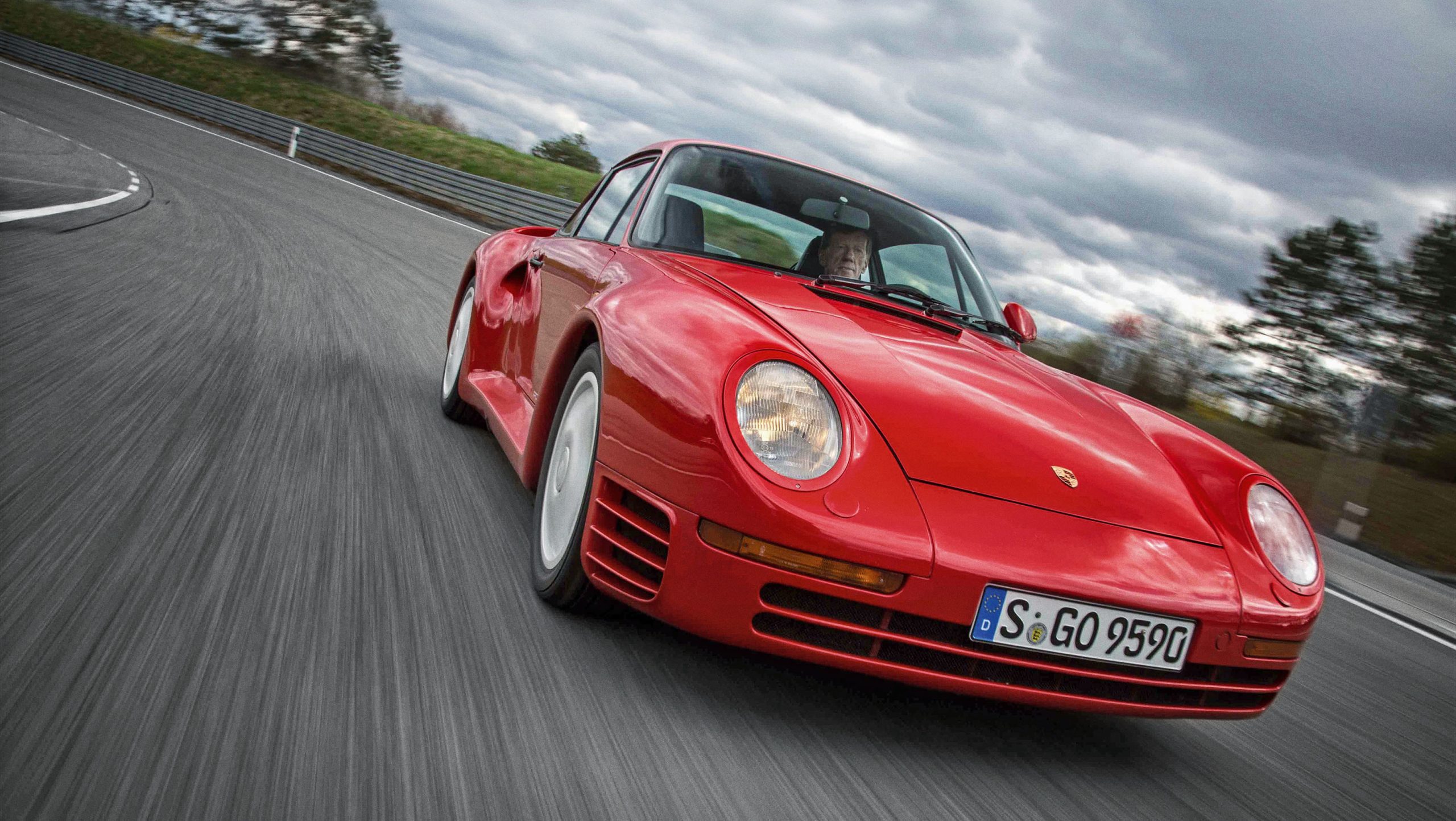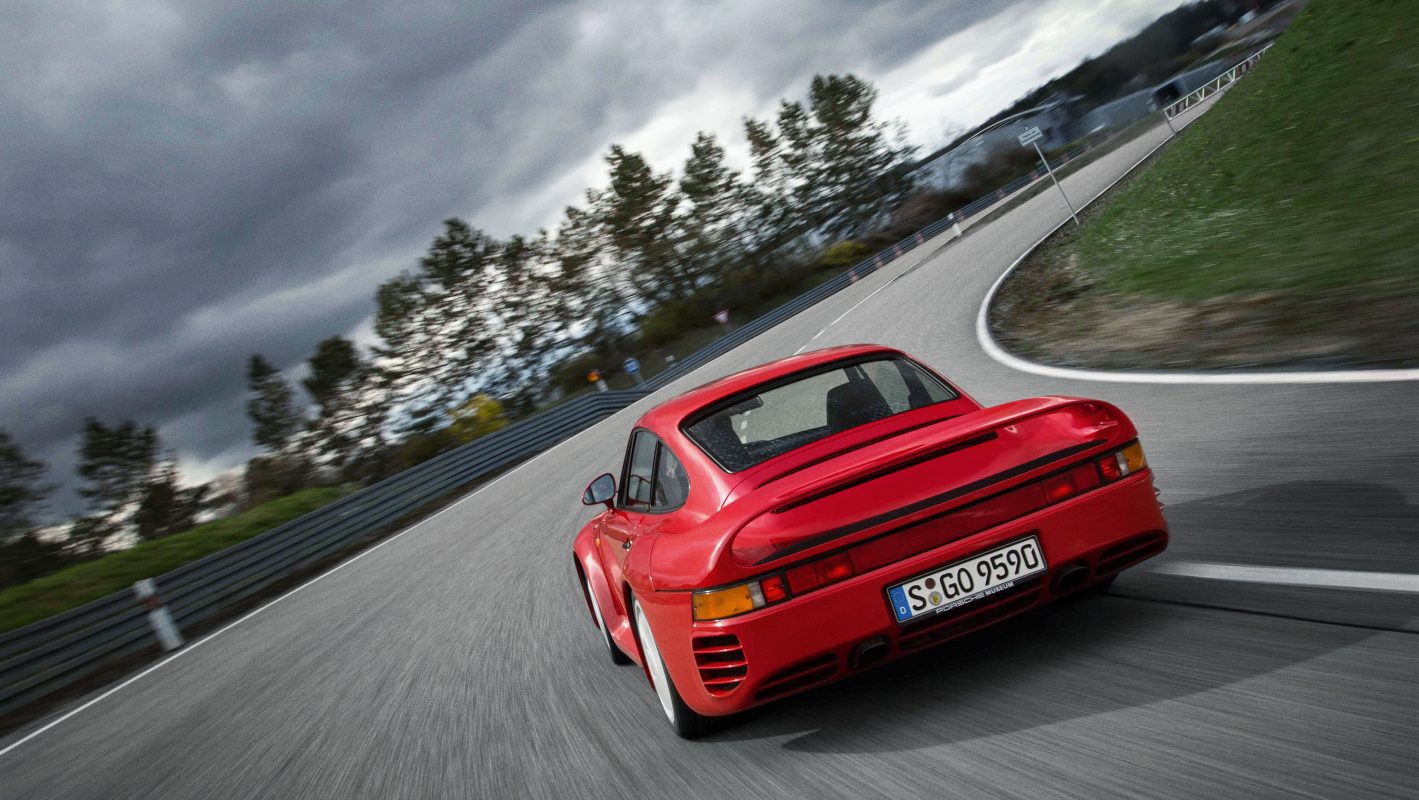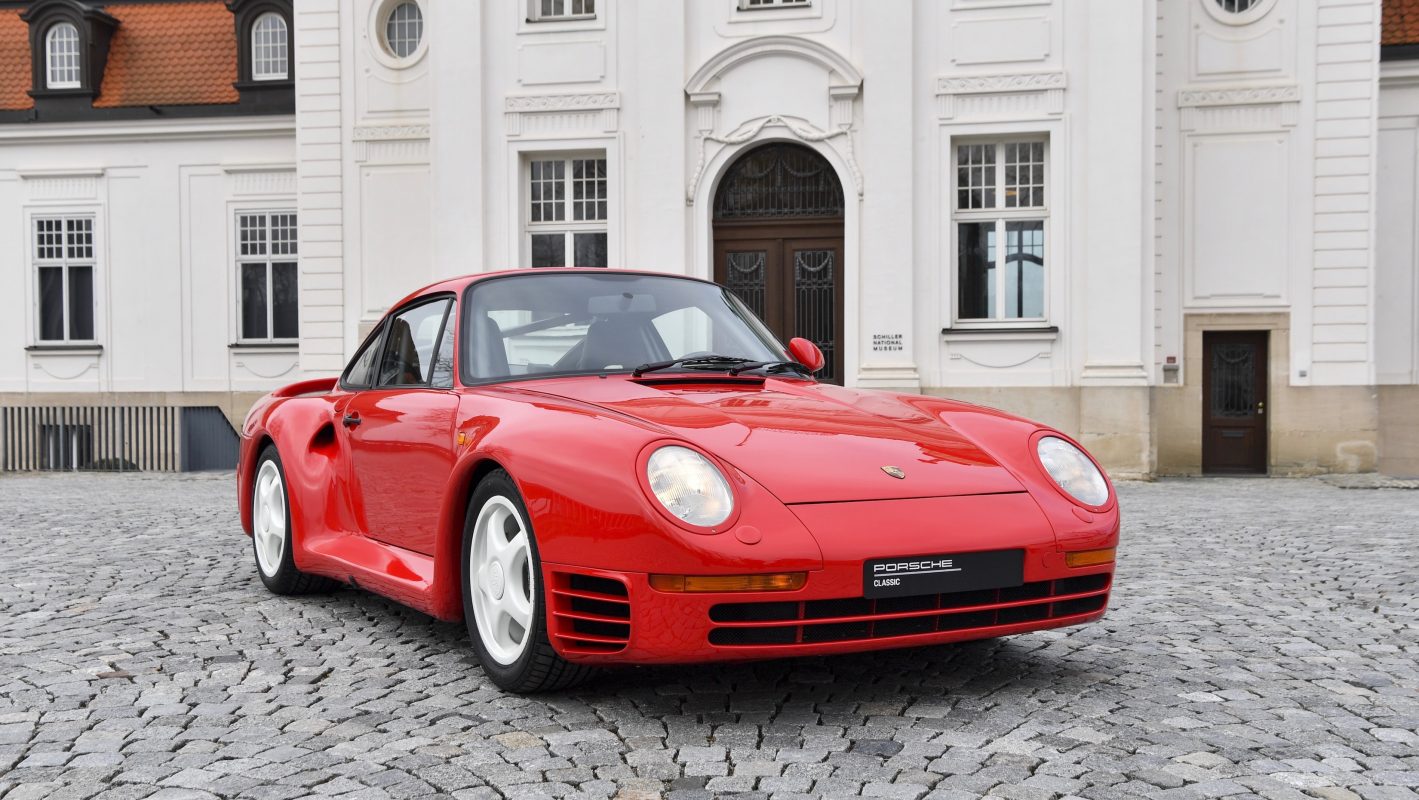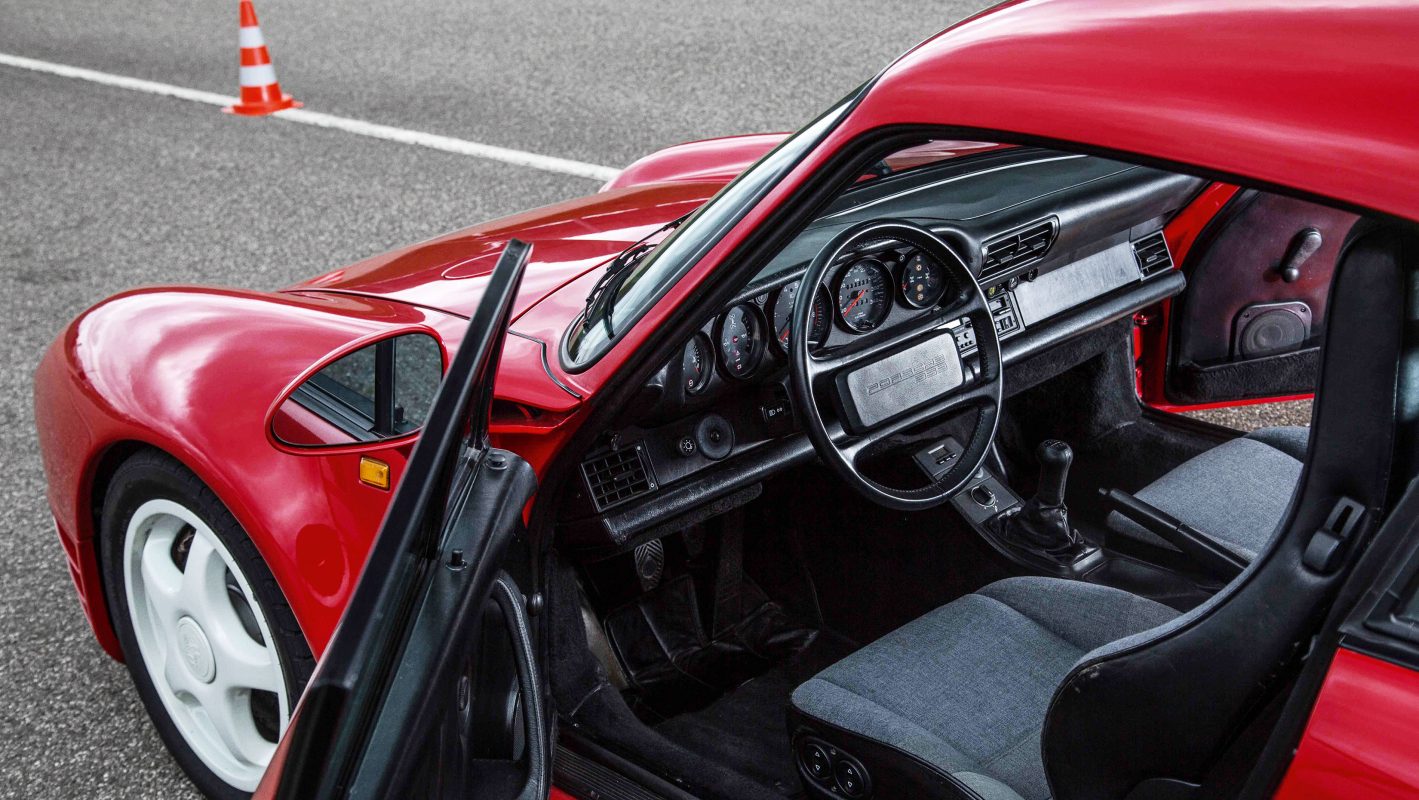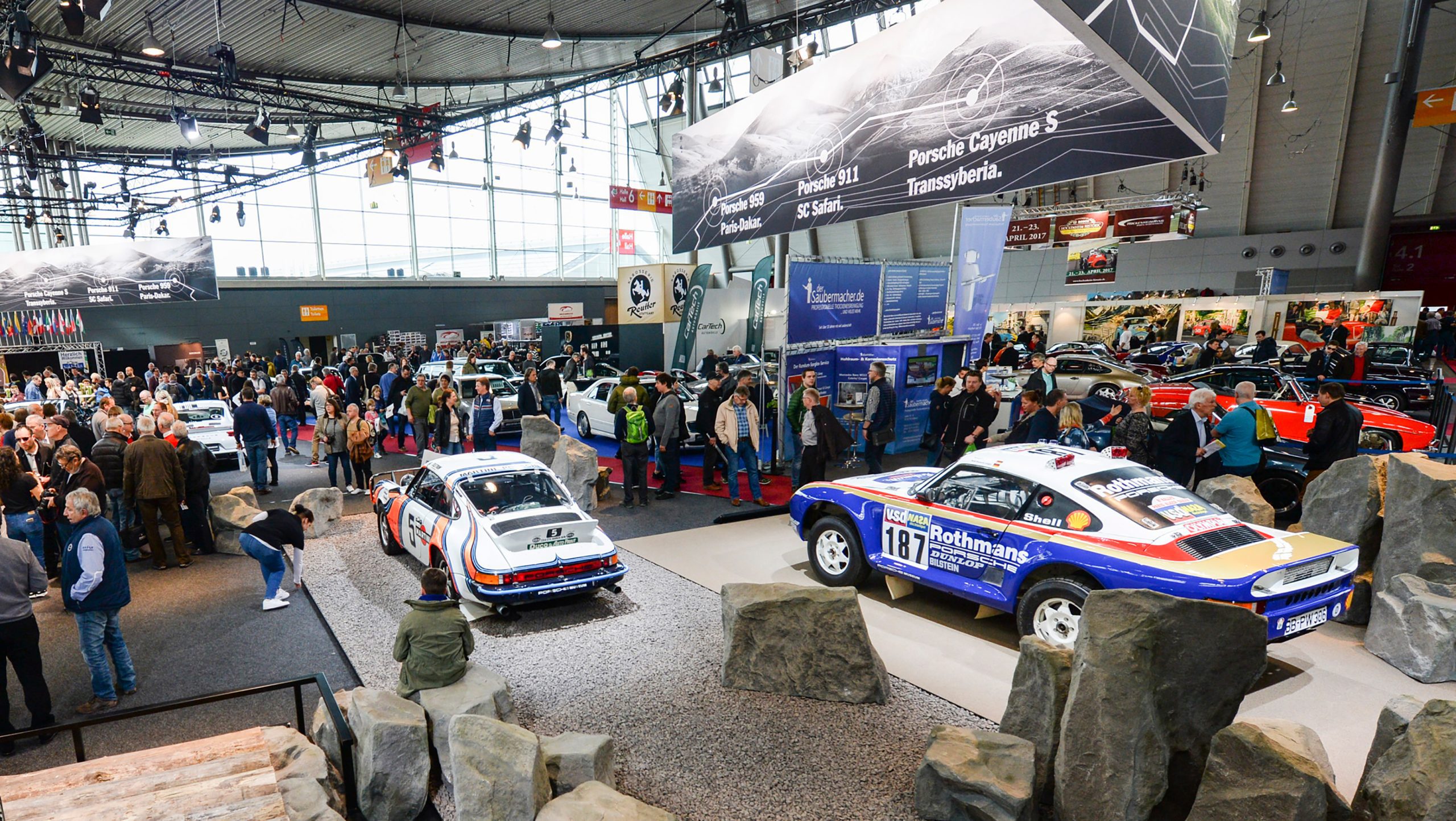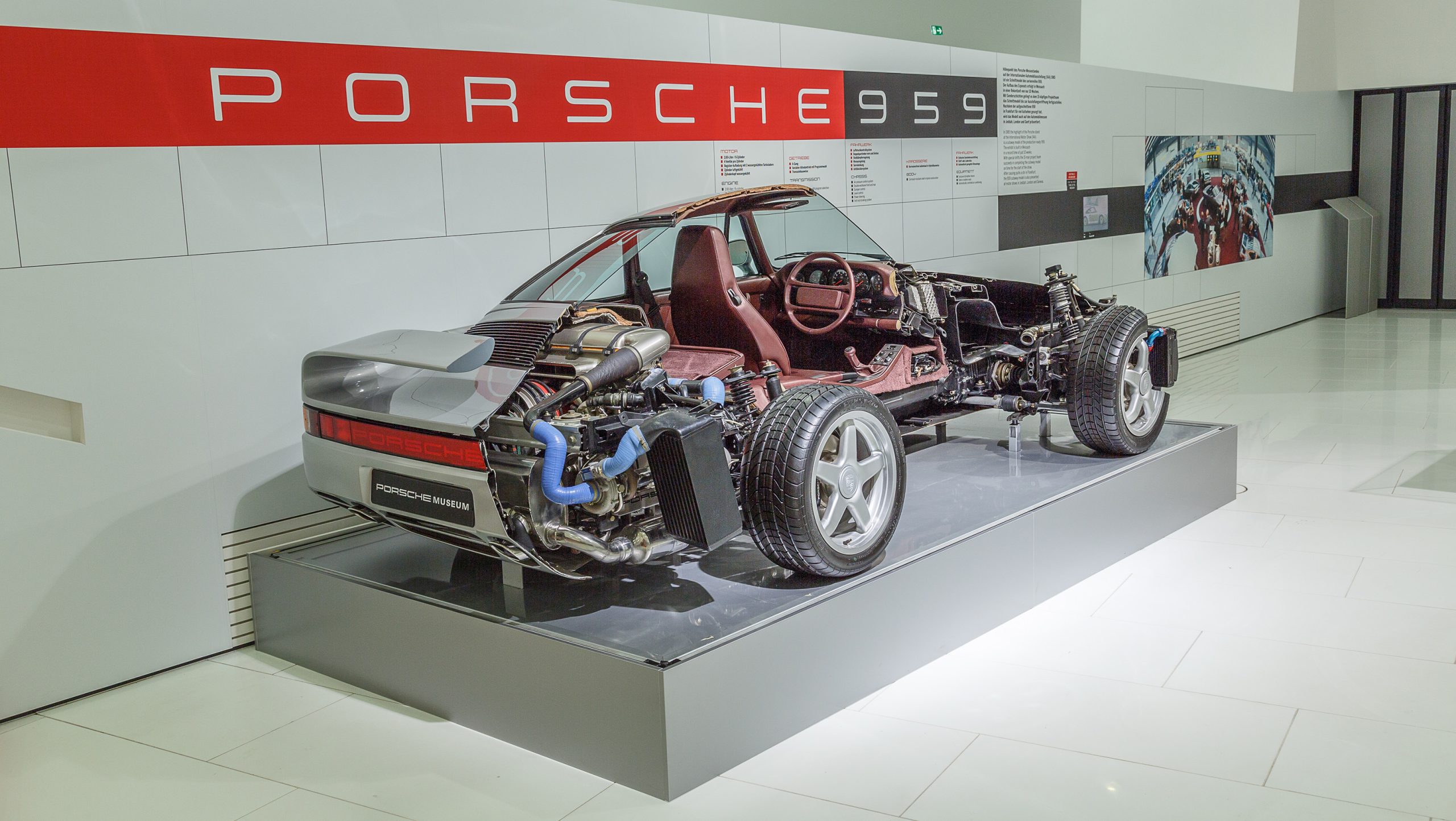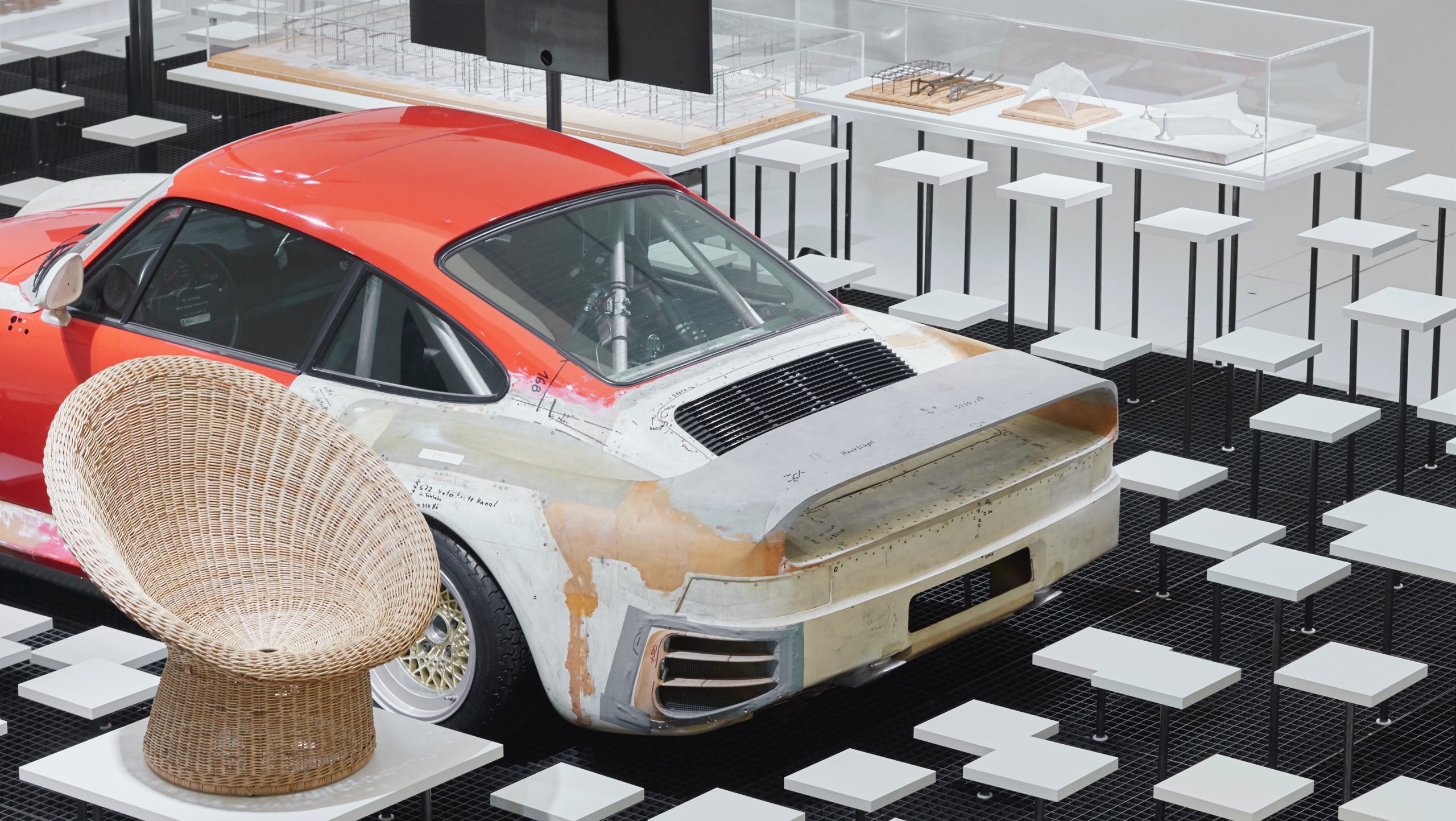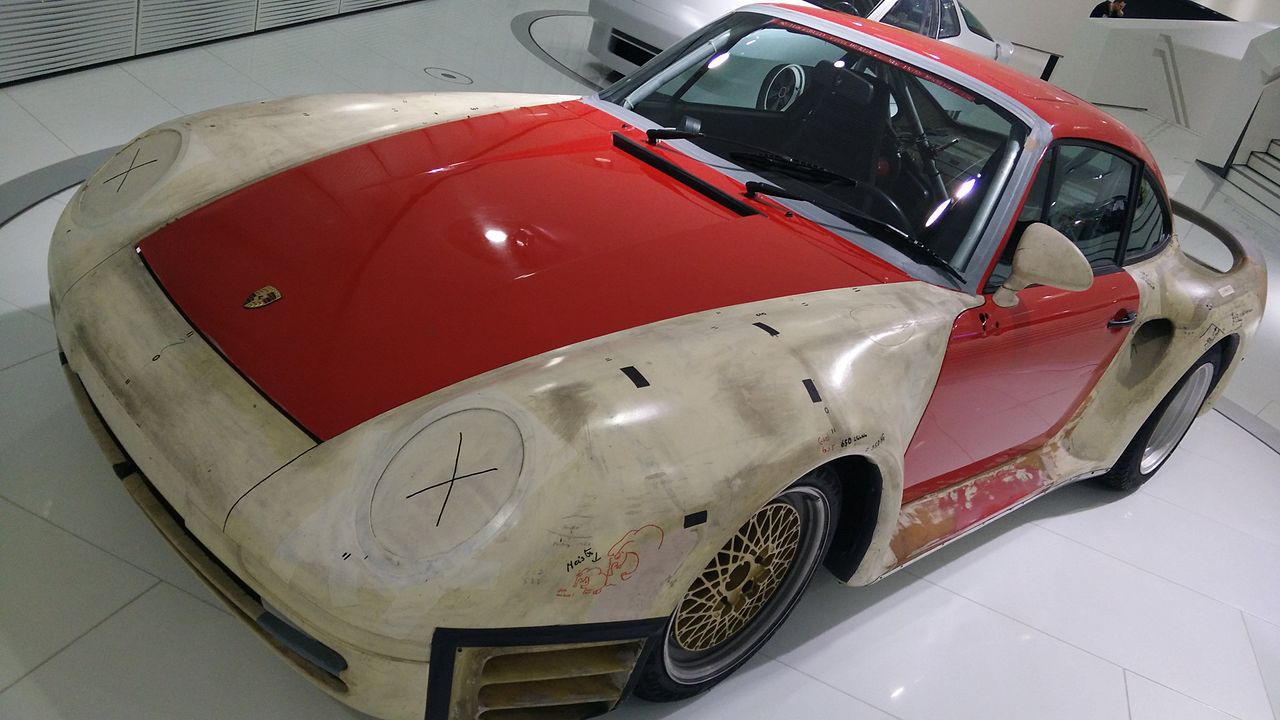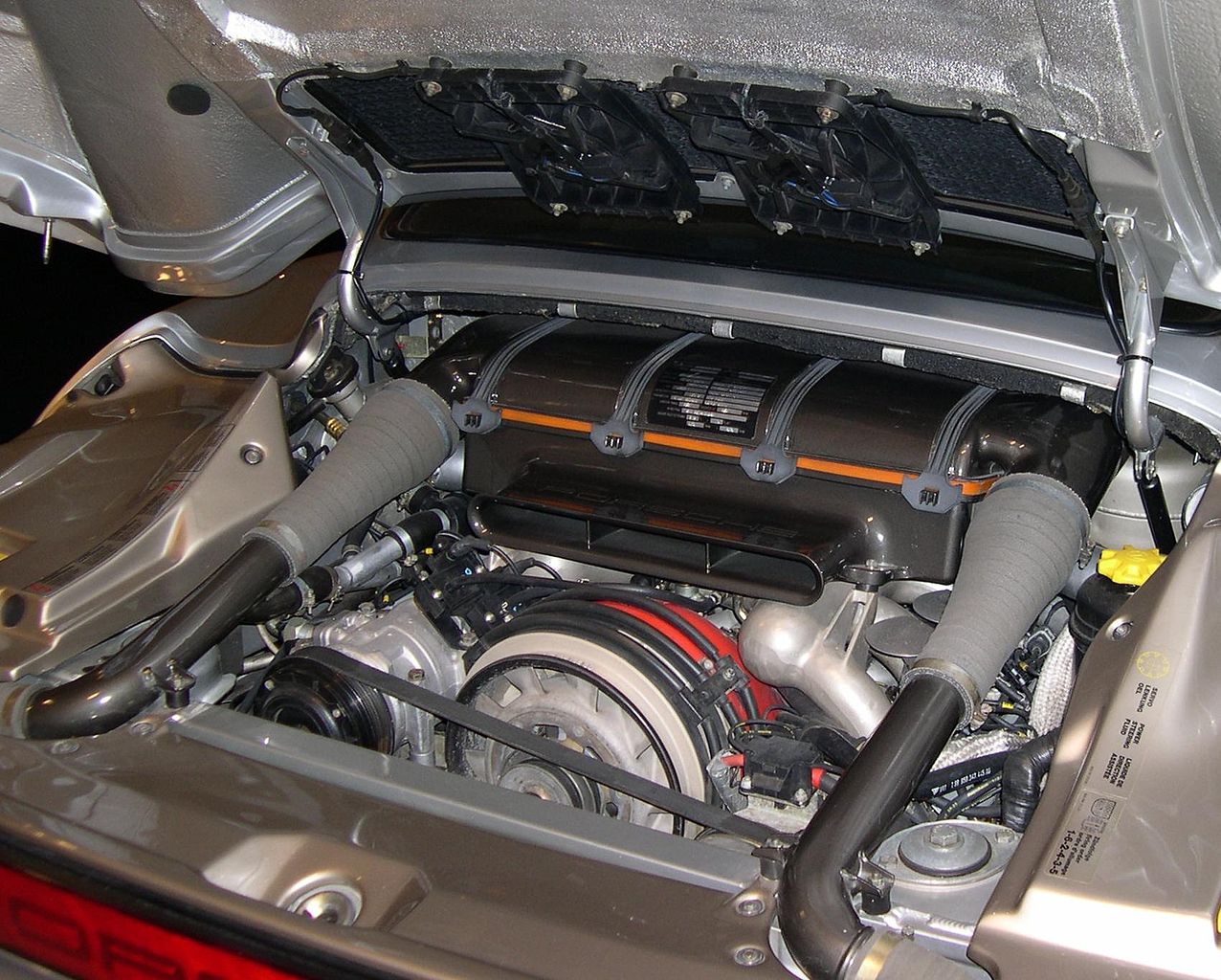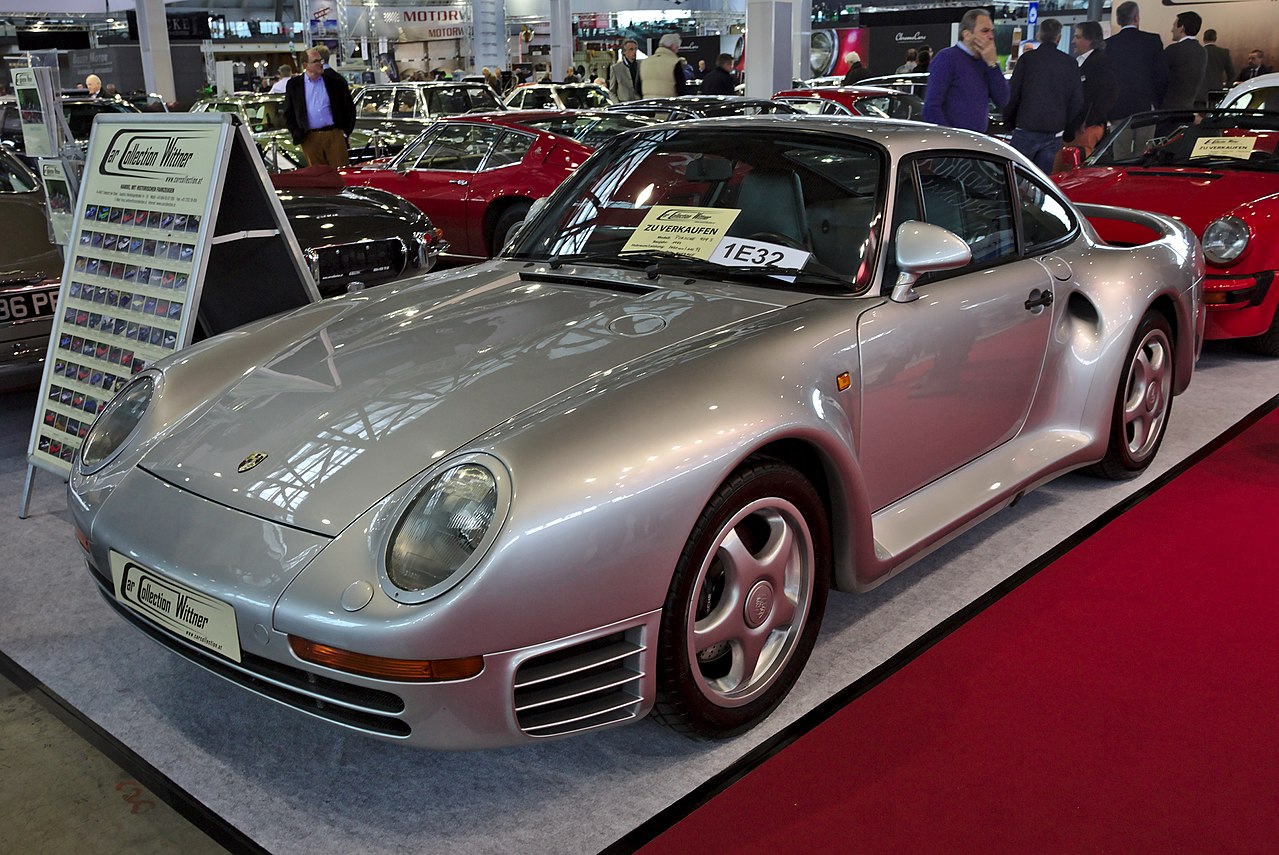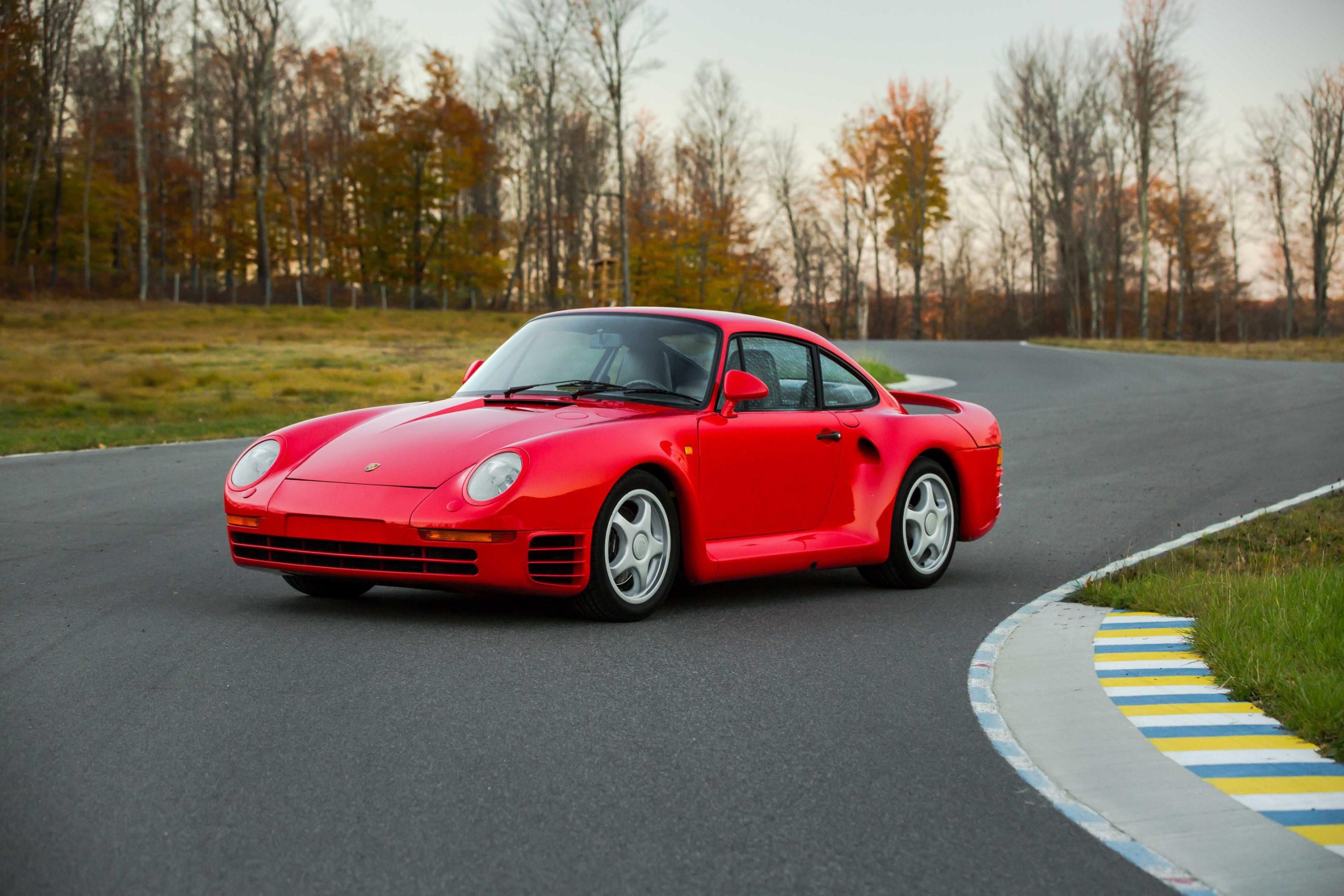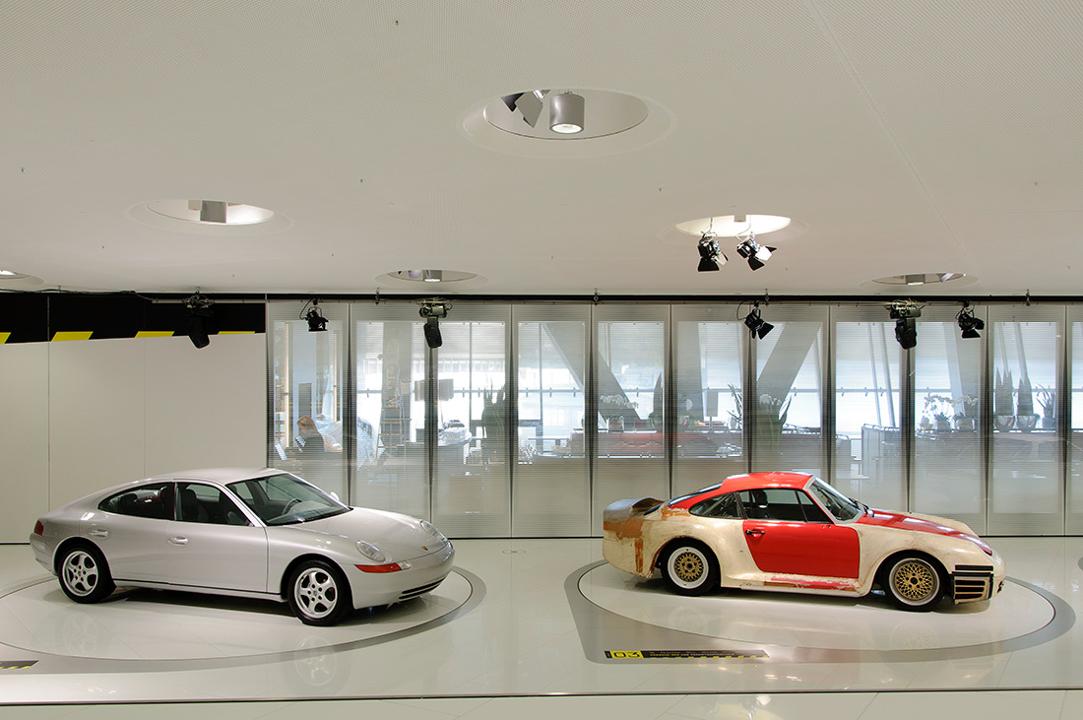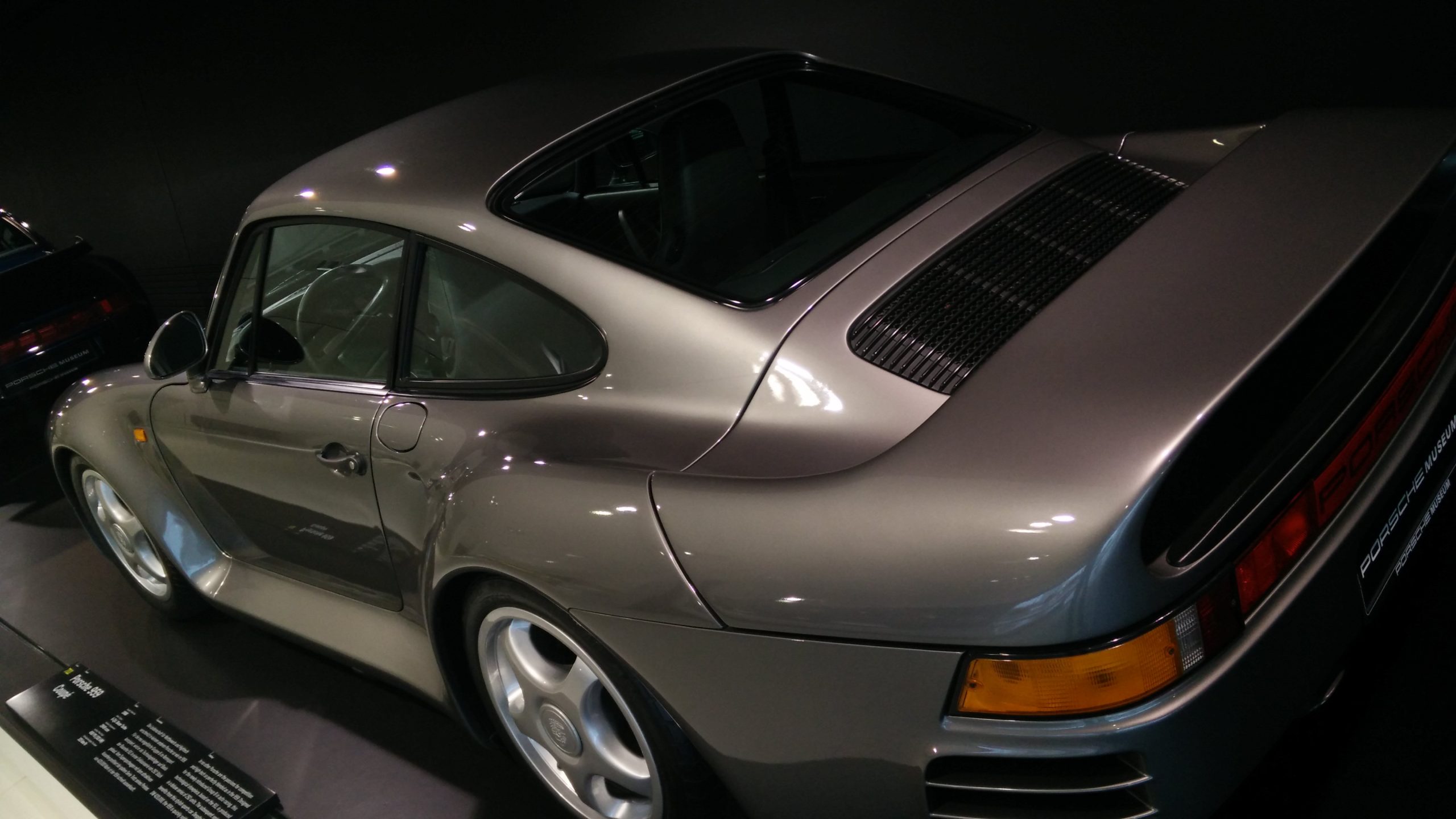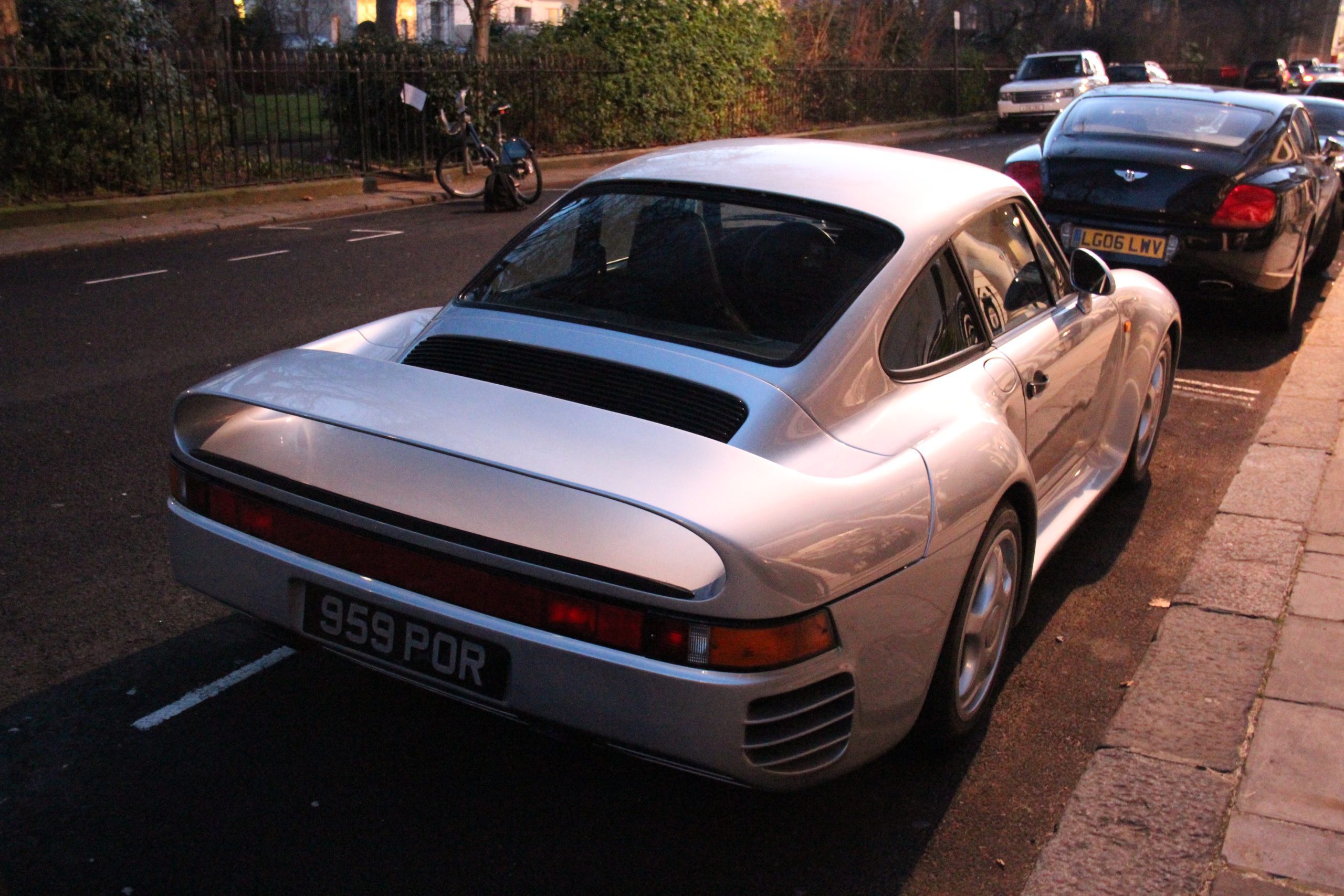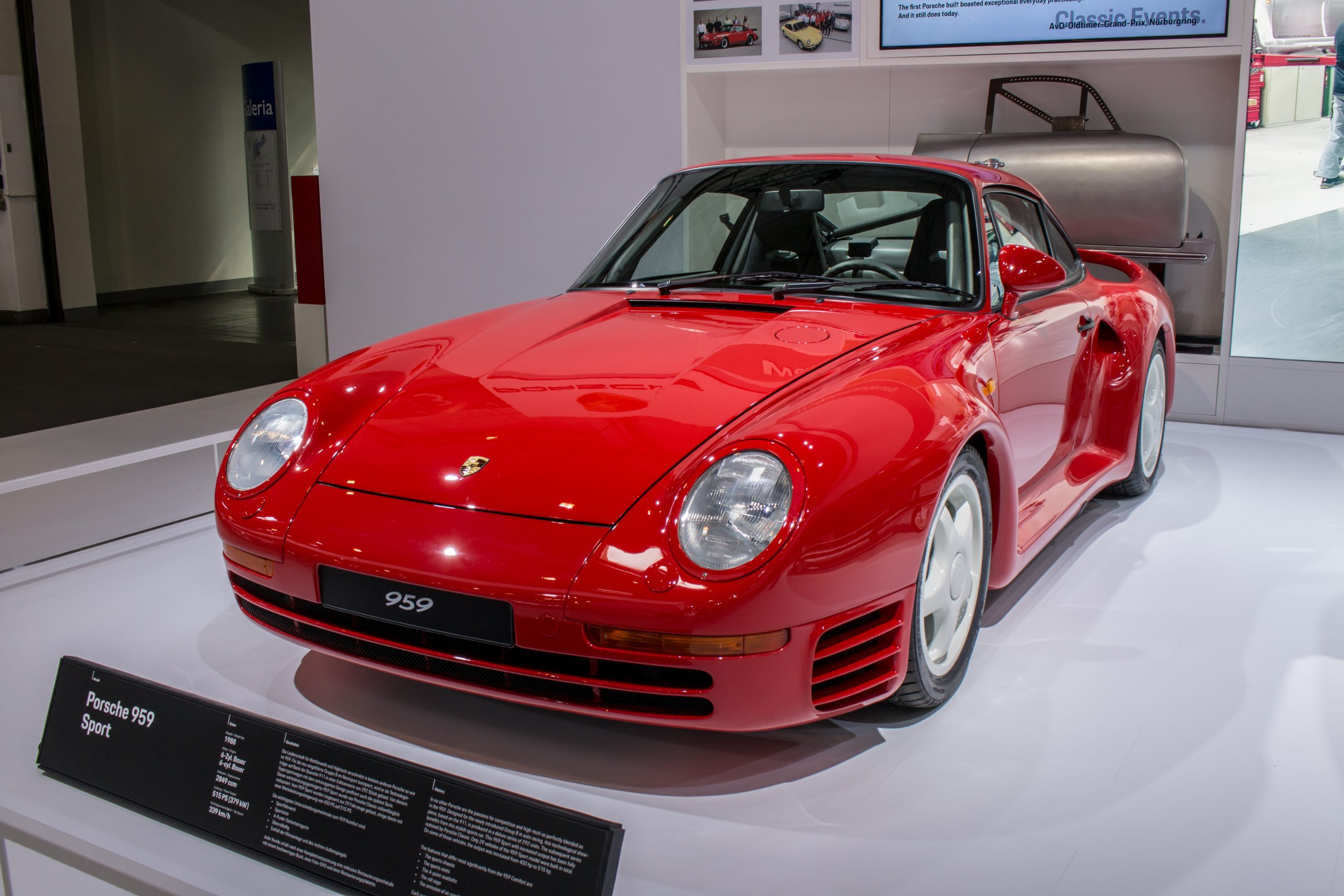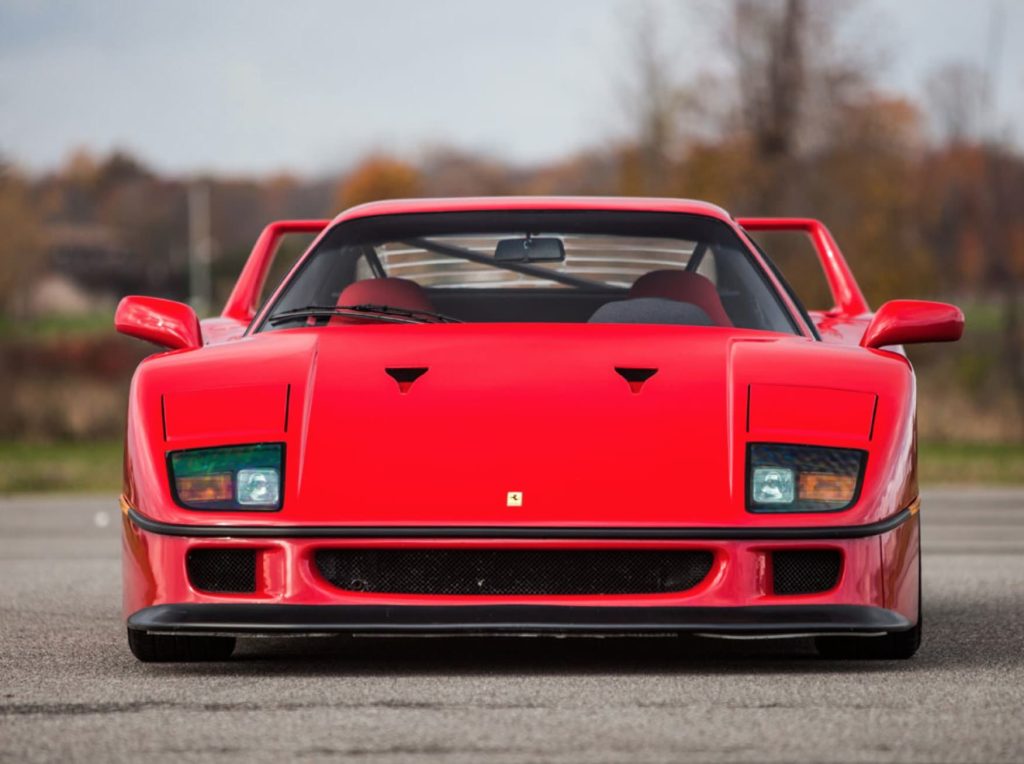Porsche 959
Introduction
Certain cars in history force the competition to pull their socks up and embrace the future.
The Ford Model T revolutionised the mass-production process. The original Mini completely rethought the way components of a car could be packaged with its transverse engine employed to maximise passenger space while minimising the car’s footprint. The Toyota Prius shudders may be a dirty word on this website, but it’s difficult to argue with the impact it had on attitudes towards hybrid and low-emission powertrains, now commonplace in vehicles at all levels.
Back in the late eighties, Porsche was working on a vehicle that would have a similar influence on supercar landscape: the 959.
Featuring a 2.85-litre turbocharged rear-mounted flat-six engine based on the flat-six out of a 911, which put 450hp at 6500rpm to all four wheels, the 959 was the peak of supercar performance in its day.
Features like anti-lock brakes were a fairly recent innovation at the time, but the 959’s technological innovation didn’t stop there. Eight hydraulic dampers – four at each corner – meant the 959 did without anti-roll bars. Electronic ride height and damping adjustments were made by the car’s on-board computer, allowing the car to automatically lift or lower itself depending on the conditions and speed.
The 959 was the first production car to be fitted with an electronic tyre pressure monitoring system, which worked on some of the world’s first run-flat tyres – Bridgestone RE71 Denlocs. Those tyres were fitted onto the world’s first production-car magnesium wheels, with hollow spokes. The 959 also featured a front diff with hydraulically-actuated clutches that were computer-controlled.
At a time when mobile phones were the size of your face and barely had screens, the technology seen on the Porsche 959 seemed out of this world, with performance figures that remain competitive with the current crop of supercars.
Design, Styling & Interior
Recognisable beneath the many aerodynamic additions to its shape, the 959 has some resemblance with its lineage; with a bloodline as pure as the Porsche 911, this apple was unlikely to stray far from the tree.
Massive flared arches direct airflow over the car towards the integral rear wing, with teardrop-shaped wing mirrors helping it slice through the air with minimal drag. Porsche managed to keep the 959’s drag coefficient to 0.31 with a ‘zero-lift’ air profile helping give stability at speed.
The ‘bodykit’ widens the car’s profile to accommodate the 959’s all-wheel-drive system and adding length at the back to allow room for the hybrid water- and air-cooling system employed on the flat-six.
To keep the 959’s weight low, the car features a mixture of aluminium, Kevlar and Nomex in its body panels – resulting in a kerb weight of just under 1500kg.
This is not so much a car that was designed in the traditional sense as calculated from the ground up.
Inside, surprisingly for such a high-performance model and breaking with the spartan tradition followed by rivals from the likes of Ferrari at the time, the 959 gets the full-on luxury treatment. Porsche had aimed to retain the luxury appeal of its 911 line, and 959 drivers received all the creature comforts of the ‘lesser’ sports car – air conditioning, leather seats, a radio, electric windows – all of which makes the car’s performance even more impressive.
Performance
Incredibly for a car that was designed over 30 years ago, the Porsche 959’s performance stacks up with many supercars and sports cars today. 0-60 takes just 3.9 seconds in the 959, with car topping out at 196mph.
How is this possible? The 959’s power comes courtesy of a 2.85-litre flat-six power plant, mounted in the rear, which is both air-cooled and water-cooled, as well as turbocharged for good measure. This endows it with 450hp at 6500rpm – with a 1450kg kerb weight and extra-slippery aero body helping make that engine’s life easier.
Most impressive of all is the all-wheel-drive system that transmits that power to the road. All-wheel-drive is a fairly common feature of many modern supercars, but back in the eighties a system like the Porsche-Stuer Kupplung (PSK) all-wheel-drive system had never been seen.
Running a 40:60 power split most of the time, the system could shift up to 80% of the power to the rear wheels under acceleration, helping to maximise the traction benefit afforded by the rear-engine setup.
While most all-wheel-drive systems even today rely on detecting slip to decide where to direct power, the PSK was governed by computers, which calculated the best way to direct power based on inputs from such variables as steering and throttle position, g-forces, engine boost, helping to optomise the power reaching the road.
Ride & Handling
That all-wheel-drive system also helped the 959’s handling, though it wasn’t the only aspect to have an impact here.
Comparatively, the 959’s tyres – at 255mm wide – were not the broad rubber expected of many supercars. Those tyres were Bridgestone RE71 Denlocs, the first run-flat tyres ever fitted to a production car, fitted to extra-light magnesium wheels with hollow spokes, keeping unsprung weight to a minimum while allowing the air pressure to spread out across through the wheels, aiding tyre performance.
Stopping power was provided by the then-largest set of brakes Porsche had ever fitted to a production car, 12.6 inch rotors at the front and 12.1 at the rear, with four-piston calipers at each corner. ABS – another first – helped keep things under control under heavy braking.
Front and rear the 959 had a double-wishbone suspension setup, helping keep those wheels on the road, with adjustable dampers and ride height. The 959 had originally been designed with the aim of competing in the Group B rally championship, featuring the fastest rally cars in the world – though the championship was cancelled in 1986 after tragedy struck when Jaoquim Santos lost control of his Ford RS200, crashing into spectators.
The adjustable ride height was aimed at allowing the 959 to be adjusted for off-road driving, with selectable settings at 4.7 inches, 5.9 inches and 7.1 inches. The car’s computer was also able to adjust the ride height depending on driving conditions, with the 959 dropping to its lowest setting above 100mph to reduce drag.
Prices & Specs
When new, the Porsche 959 cost $225,000, which at the time made it one of the most expensive cars on the market.
Despite this hefty price tag, it’s thought that each example cost Porsche in the region of $500,000 to produce, meaning the car maker made a hefty loss on each one sold.
These days, it is difficult to find a good example for less than $1 million. At the time of writing, Hemmings lists three Porsche 959s for sale, with one priced at $1,495,000, and the other two ominously price on enquiry only.
Performance and speciifications
To anyone who gets a kick out of the kit that makes a car go like stink, the Porsche 959 has a smorgasbord of tech to get stuck in to.
The twin-turbocharged 2.85-litre flat-six featured sequential turbochargers in an effort to eliminate turbo lag and provide smooth power delivery throughout the rev range. The cylinder heads were water-cooled, while the cylinders themselves were air-cooled – a setup carried over from Porsche’s racing cars – and the engine’s output was an impressive for the day 450 hp.
Forward-looking features like the PSK all-wheel drive system added to the Porsche 959’s futuristic tech appeal, while increasing the refinement and confidence-inspiring drive that the car became renowned for – features that felt a world ahead of its time.
Photos & Wallpapers
From the first glance at the Porsche 959, it is easy to see that it is a precision instrument. No part of the car looks like it hasn’t been thought out, making it a delight for engineers in particular to look at. The incredibly aerodynamic bodywork with its muscular flared edges give the impression of exactly what the 959 delivers from the moment you turn the key – a 911 turned up to 11.
Our wallpapers gallery allows you to adorn your desktop or home screen with images of the 959 in all its glory. The widened rear of the car, accommodating the broader suspension setup over the standard 911 and the extra all-wheel drive kit, is accentuated by the red rear light strip that runs the entire width of the car. The 959’s broadness help give it presence on the road, though it’s not as imposing as some contemporaries like the Ferrari F40 it went toe-to-toe with at the peak of eighties supercar performance.
Porsche 959 videos
There is a wealth of footage on Porsche 959s on YouTube, but as you guys know we like to pick a few key videos that we believe best give you a view into the Porsche 959 so that, if you find yourself with a spare million-and-a-half you can make a decision on whether this car is for you.
First up, Richard Hammond tears up the Top Gear track at Dunsfold, having camped the night at the circuit in order to maximise his time driving one of his automotive heroes. He also introduces the 959 to its main rival amongst the supercar elite – the Ferrari F40.
As part of the magazine’s ICONS series, EVO Editor Nick Trott takes an in-depth look at the Porsche 959 and the Group B rally championship that led to its development.
Bruce Canepa talks Petrolicious through his own Porsche 959 and the battle he had to import his car into the USA – set to a backdrop of some utterly gorgeous footage of him enjoying his car.
In this clip from Autoblog (in Dutch), the 959 is put up against a modern counterpart – the 997-generation 911 Turbo S. How will the eighties giant of speed fare against the cream of the Turbo Porsche crop of today? Find out below.
Alex Goy can barely believe that he has been handed the keys to a Porsche 959 in the below clip. In his typical style, Goy proceeds to give a highly detailed yet textured breakdown of his experiences in the car, finding himself lamenting the passing of the era of the all-out bonkers supercar.
Group B & Paris-Dakar
The 959 was built by Porsche with motorsport in mind. It wasn’t just the racecar-sourced turbocharged flat-six engine out the back that hinted at this aim for the car.
When Porsche engineer Helmuth Bott approached the 959 project, his aim was to prove the longevity of the 911 platform, with motorsport the channel via which he would convince Peter Schutz, the Managing Director at Porsche, to keep the 911 in the marque’s lineup, rather than replacing it with the then-new 928.
Schutz went for it, and so Helmuth began work on the 959 in 1981, with the Group B Rally Championship his intended platform to demonstrate the capabilities of his creation.
As a result of this, early 959 test mules were known as the Gruppe B Porsches, and the rallying target led to the development of the all-wheel drive system, adjustable ride height and odd gearbox configuration that street-legal 959s retained – six forward gears with ‘G’ gear specifically designed with off-road driving in mind.
Were it not for the Group B homologation requirements mandating that the manufacturer build and sell at least 200 road-going versions of their competition car, the 959 street car may never have come into being.
Before the 959 was able to turn a wheel in anger in the Group B rally series however, a series of tragedies led to the race series being cancelled during the 1986 season, leaving Porsche with their new off-road designed supercar and nowhere to race it.
Some 959s did see off-road motorsport use – in 1984, three 911s elevated to 959 spec raced in the Paris-Dakar rally, and in 1985 a fully-fledged 959 rally car took on the mighty cross-country dash.
Another racing variant – badged the Porsche 961 – took on the 24 Hours of Le Mans in 1986, where it finished top of its class, and seventh in the overall standings. A fiery crash during the 1987 race ended its motorsport career, with the car being destroyed trackside – though Porsche later repaired that vehicle to display in its museum.
What The Experts Said…
The world is full of armchair commentators when it comes to cars. At Supercars.net we have a number of journalists and automotive publications we rely on when we want to get unbiased opinions from people we admire.
Below, we’ve outlined some of the things these experts had to say about the Porsche 959. We have included snippets only so definitely dive deeper into their content to find out the details behind their assessments. Please support these awesome publications because they invest a lot in the details, amazing product photographs and great writers.
The Porsche 959 received almost unanimous praise, with hyperbole the norm in reviews from the time of its launch. As you’ll see, there is very little criticism able to be leveled at the car, with most reviewers simply in awe of its technological achievement, and the performance ramifications of this.
Car Magazine: “the 959 is a technological milestone, likely to be remembered as the greatest sports car of the ‘80’s…”
In this review from the Car archives, Georg Cacher and Gavin Green recount their journey with a Porsche 959 from Stuttgart to the Ferrari factory at Maranello, where the 959 locks horns with the Ferrari F40 on the Italian manufacturer’s hallowed test track at Fiorano.
Having bolted from Germany to Italy the previous day, the pair are already fond of the 959. In the German car, they explain ”160mph seemed a comfortable cruising gait [on derestricted Autobahn], especially as there were the odd drops of rain,” and while on-track the Ferrari is the faster of the two, the way in which the 959 is composes itself both at speed and in everyday driving scenarios is what impresses most.
The Good
The Bad
More: Read the Full Review
Car and Driver: ”the word “perfect” is difficult to avoid…”
Car and Driver’s Csaba Csere drove the 959 in November 1987, and from this review clearly found it difficult to contain the hyperbole.
In the review, Csaba cites the combination of ”race-car performance with luxury-sedan comfort, that is equally adept at commuting through rush-hour traffic, profiling in jet-set locales, negotiating blizzard-swept mountain passes, and outrunning light airplanes… as one of the 959’s more intoxicating elements, and found it difficult to come up with a scenario where the car would be anything less than ideal.
Csaba also carried out independent tests of the 959’s performance figures during his drive at the Hockenheim-Ring, with the car easily demonstrating its extraordinary capabilities.
The Good
The Bad
More: Read the Full Review
Top Gear Magazine: “These two are the Veyron and Huayra of their time…”
In this companion to his video review of the pair, Richard Hammond goes into detail on his encounter with supercar royalty from a past generation.
Hammond discusses the 959’s difficult birth, before going on to consider how advanced it was for its day: “It introduced technology that has gone on to define the 911 through the decades. Twin turbos boosted the 2.9-litre flat six to 444bhp…it really does feel, sound and drive like a modern supercar.”
The Good
The Bad
More: Read the Full Review
Rivals
Rivals are not an easy thing to come by for a car as high up the food chain as the Porsche 959. In its day it was technologically peerless, and it would be years until the gear that makes the 959 the all-round excellence-mobile that it is would become commonplace.
Really, among its contemporaries there was only one car that could even hold a candle to the 959…
Ferrari F40
An evolution of the 288 GTO that the prancing horse had intended to go up against the Porsche 959 in Group B, the F40 was seen by Enzo Ferrari as a way to leave his legacy in the final supercar he signed off on – thus, the Evoluzione programme that had spawned the GTO was continued, and the F40 developed as a road car.
Ideologically, the pair are chalk and cheese; whereas the 959 is a technological marvel, the F40 is a bare-bones basic ‘go kart.’ The Porsche was able to be specified with comfortable seats, air conditioning, a radio and other creature comforts, while the Ferrari was decidedly Spartan, with even carpets and door panels eschewed in the pursuit of absolute lightness.
Similarly to the Porsche, the F40’s Pininfarina-styled body featured Kevlar, carbon fibre and aluminium in its construction, giving the shell immense strength and low weight. Plastic windows added to the weight saving efforts and increased the stripped-out feel of the F40, while a 2.9-litre twin turbocharged V8 engine, mid-mounted, provided 471hp to just the rear wheels.
That power plus a kerb weight of 1369kg made the F40 rapid. While 0-60 was 4.2 seconds, slower than the 959, its top speed was higher at 197mph.
Despite its lack of interior, the F40 when launched was suggested to retail at $400,000 – though it is thought some buyers paid far in excess of this price tag.
Our Final Verdict
The phrase ‘game changer’ is bandied around quite loosely these days, but seldom have they been more appropriate as when applied to the Porsche 959.
It launched the supercar into the 21st century, despite arriving a decade and a half before the millennium, forcing other manufacturers and established names to up their game.
Extraordinary performance was made available without the need to compromise on comfort or on-road stability – the addition of the all-wheel drive system helping to keep the Porsche 959 stuck to the road, even at speed.
Find a Porsche 959 for sale
It will come as no surprise that Porsche 959s are not a common sight on the used market. Those that do appear often command at least seven figures due to their rarity and iconic status in supercar history.
-
- Classic Driver has several examples listed on its website at the time of writing, with many ominously price on request only
- Piston Heads lists three 959s on the market at the time of writing, with one very low mileage example available with POA at Canepa in California
- Hemmings lists three examples
- Car and Classic lists two Porsche 959s at the time of writing, with one purporting to be in Paris-Dakar rally spec





